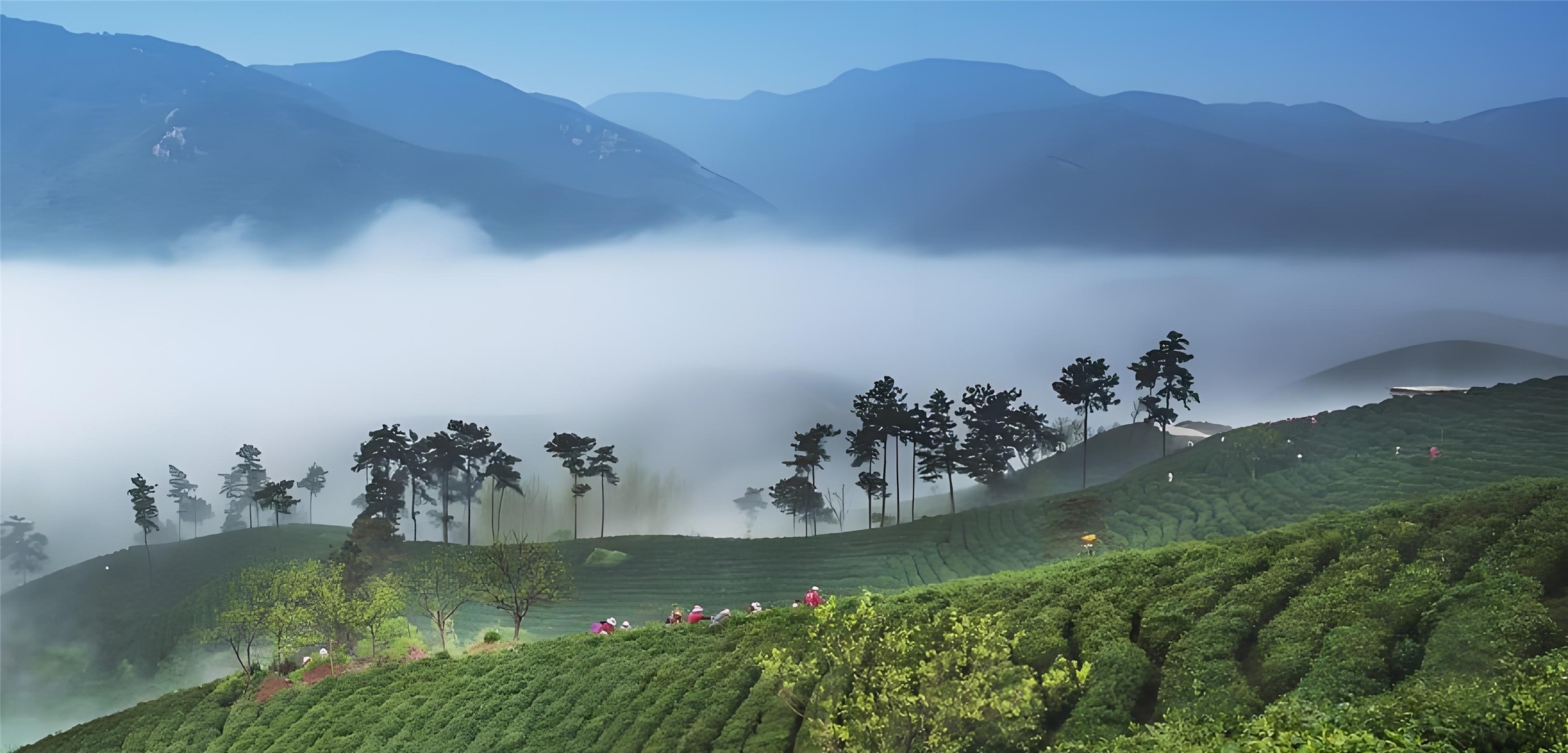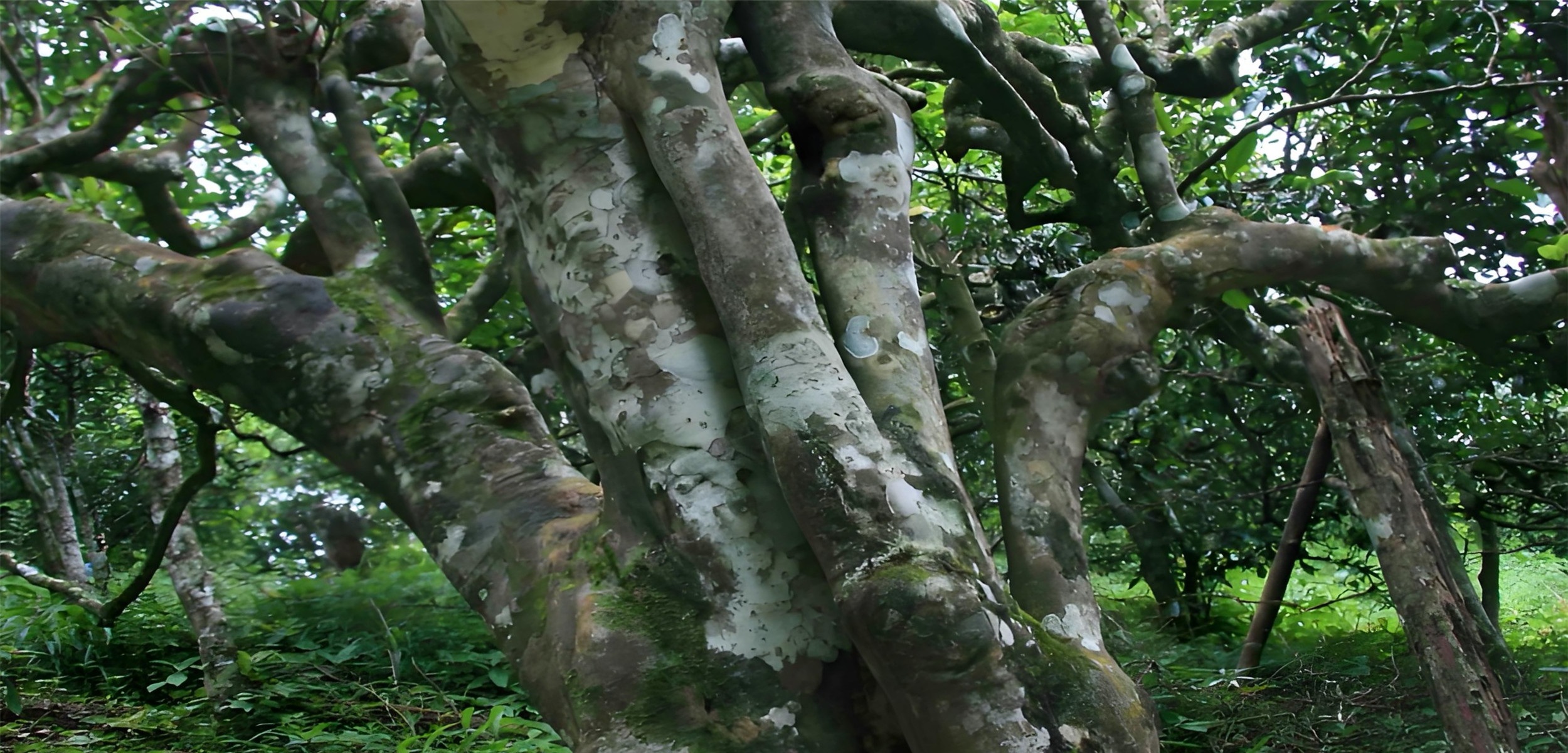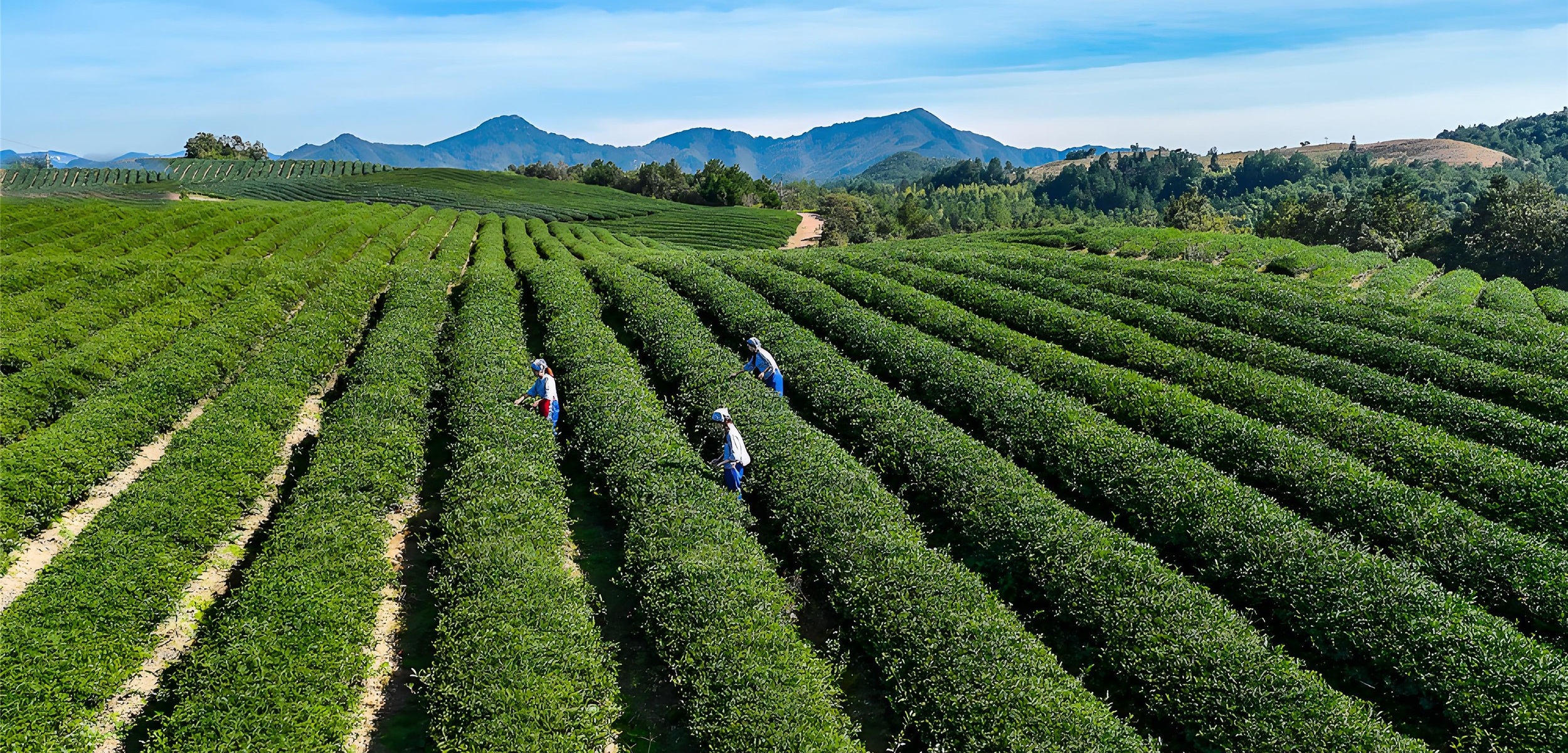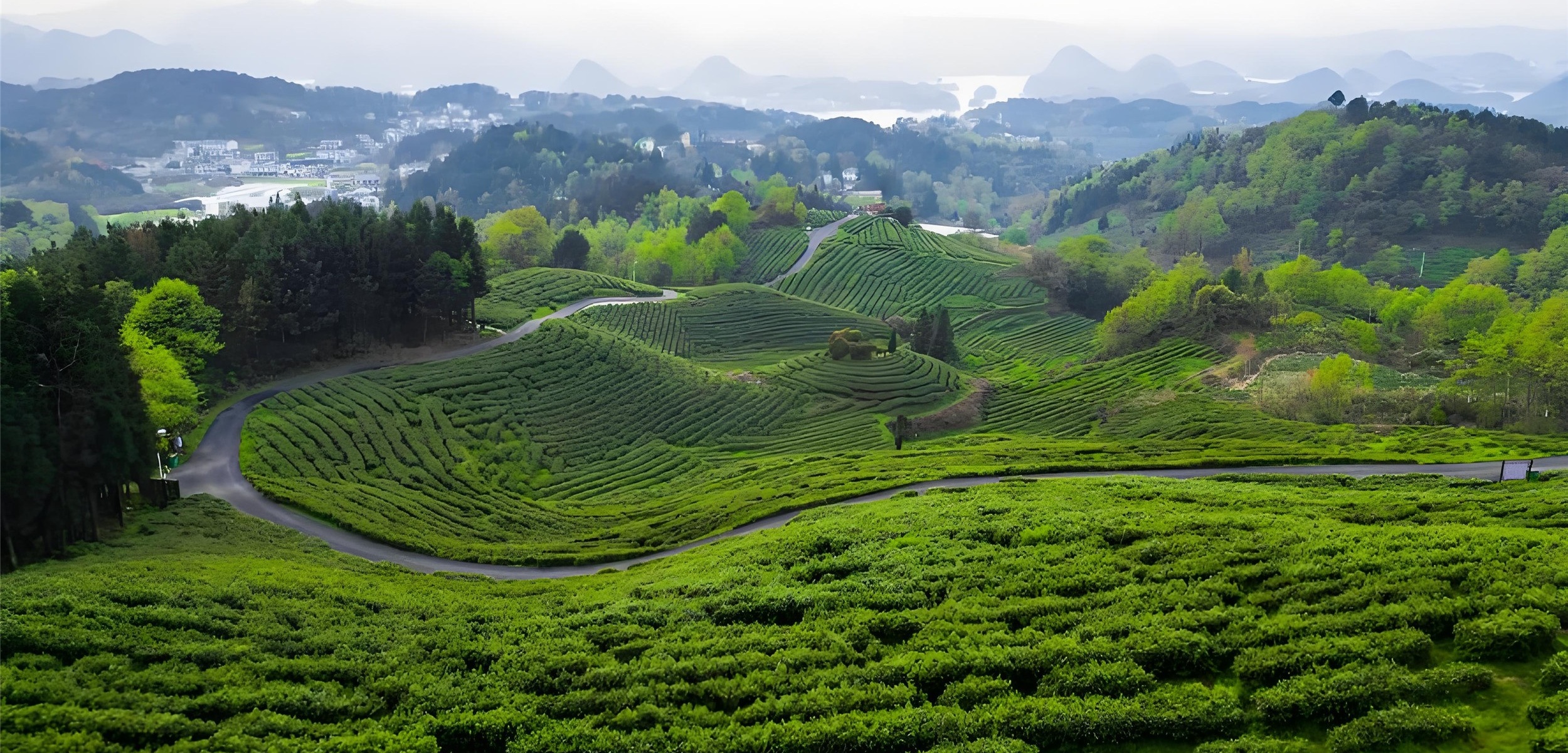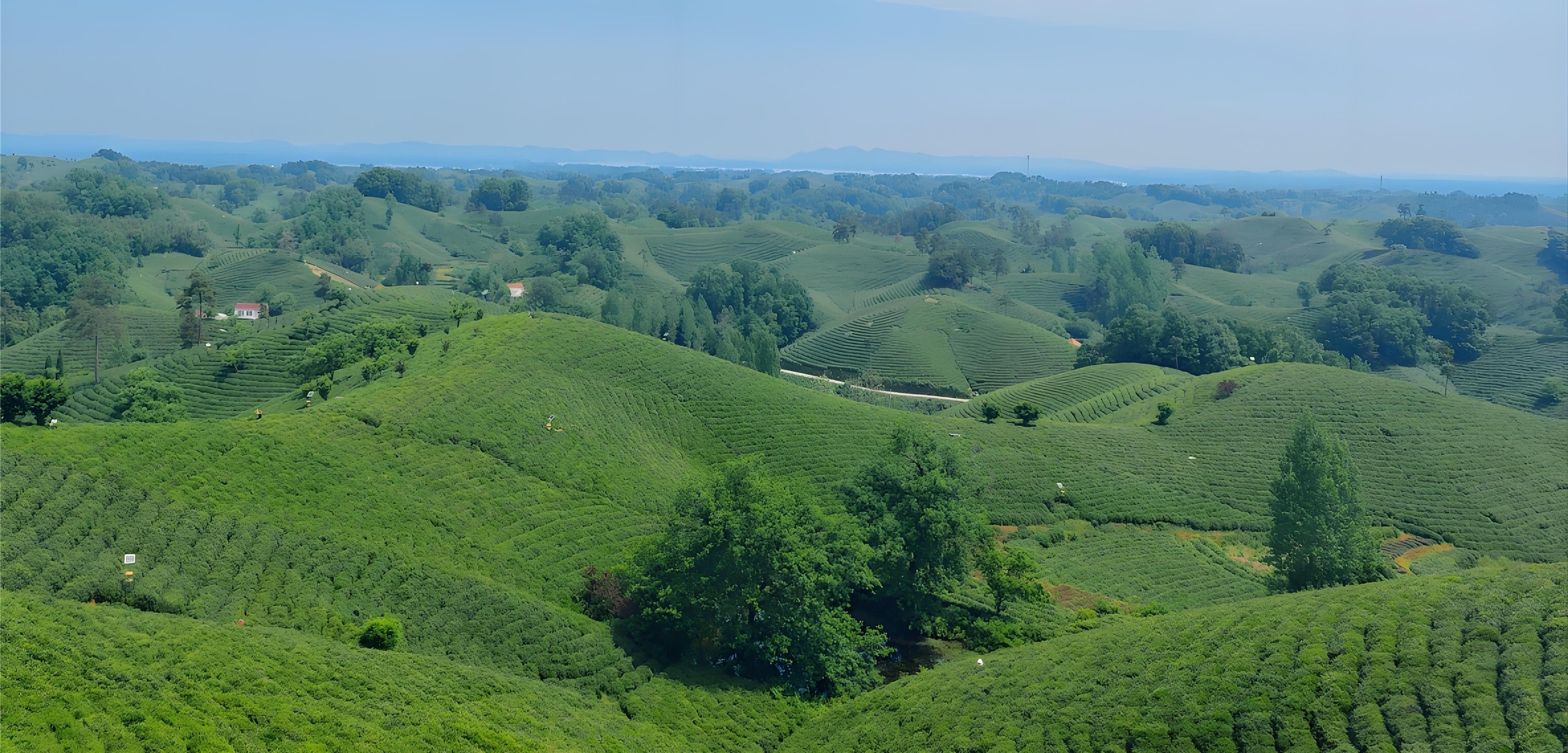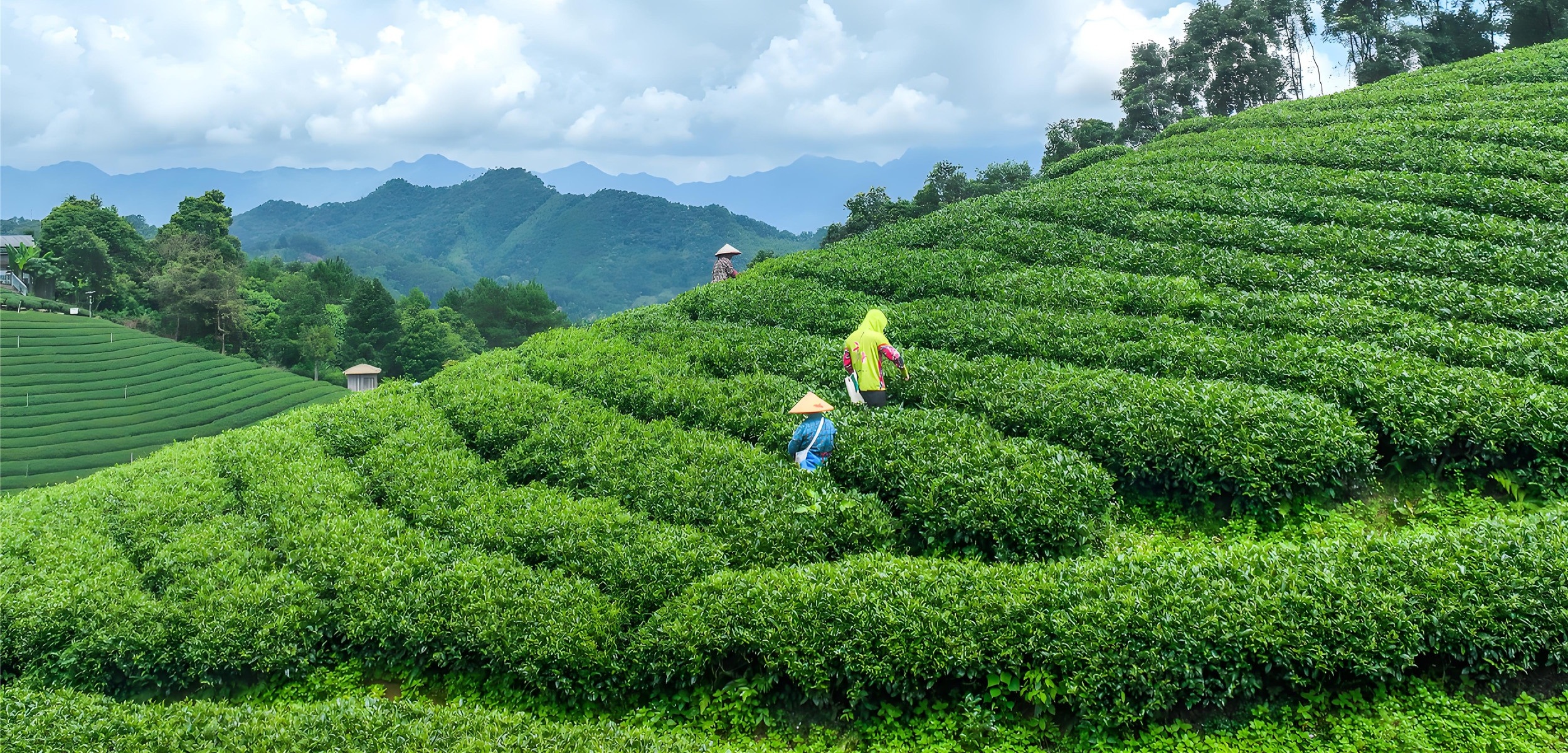章郎寻茶:云南深山中的千年茶族 Zhang Lang's Search for Tea: A Thousand Year Old Tea Clan in the Deep Mountains of Yunnan
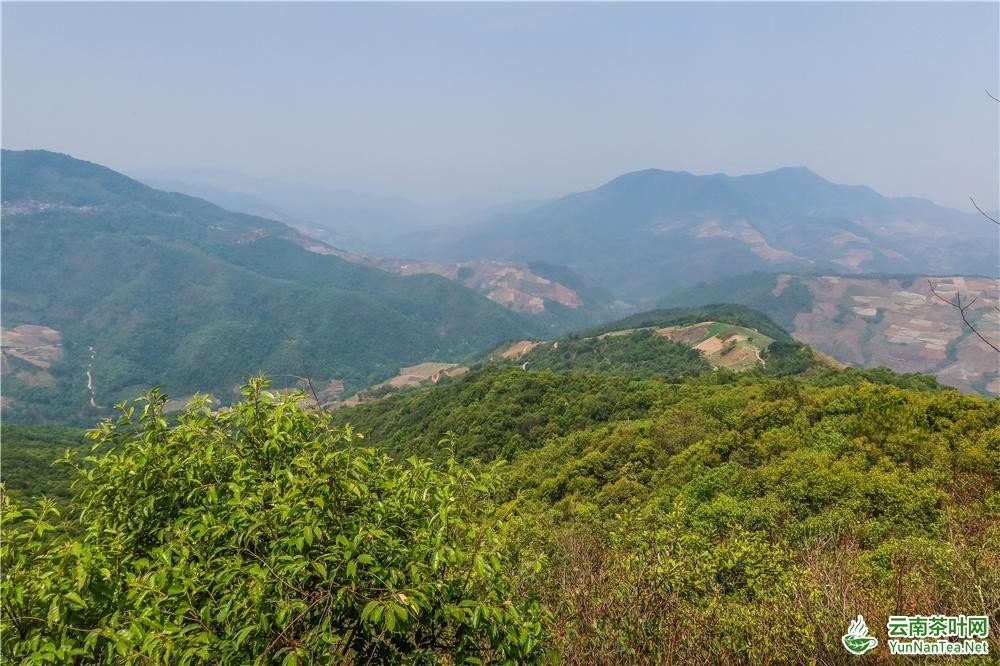
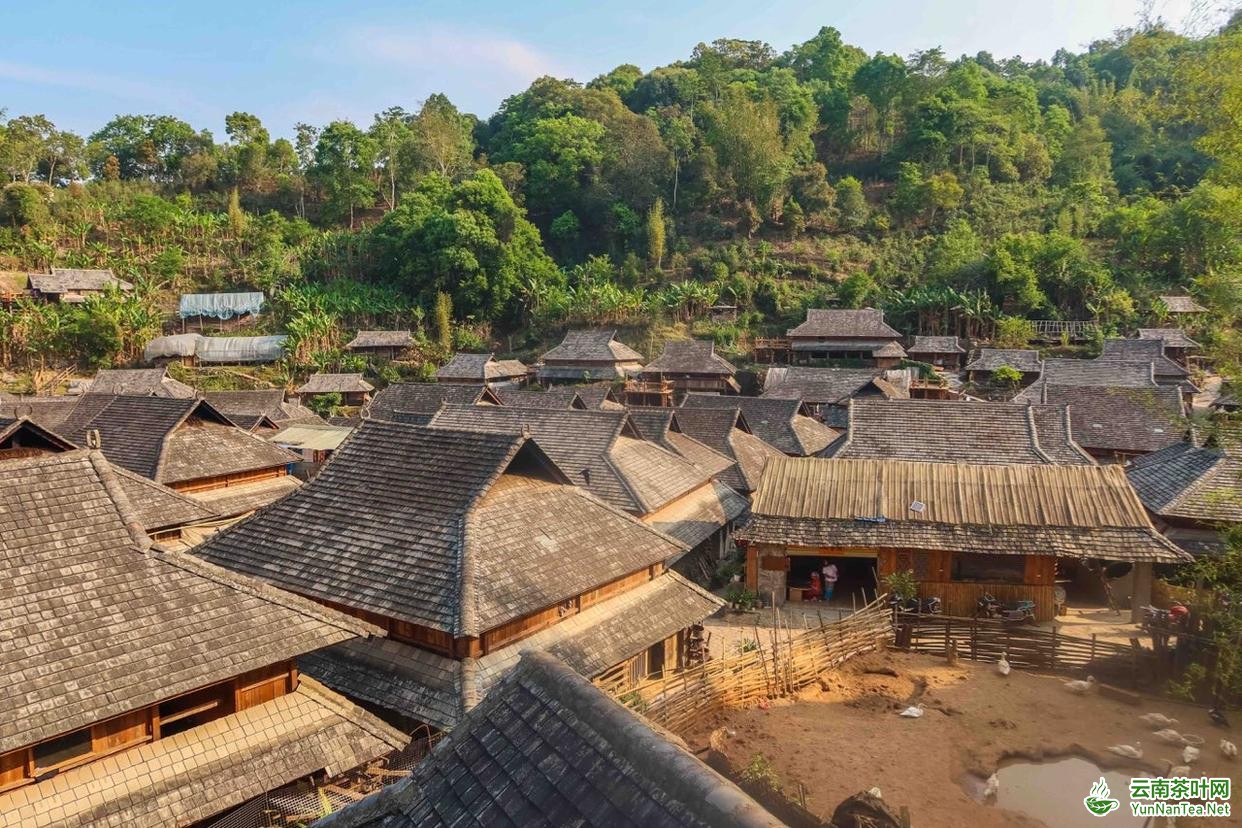
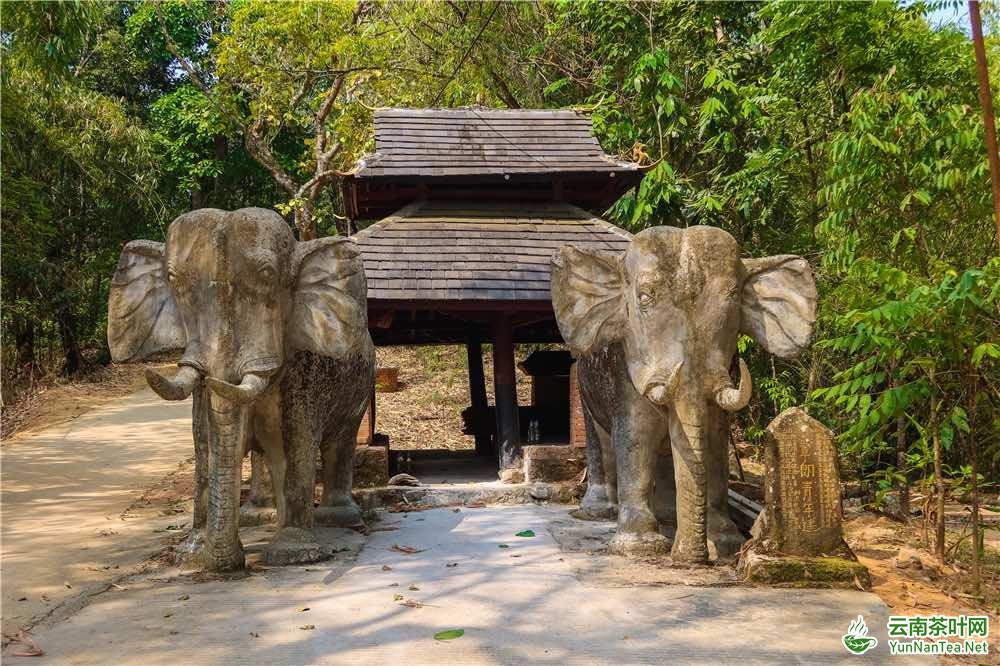
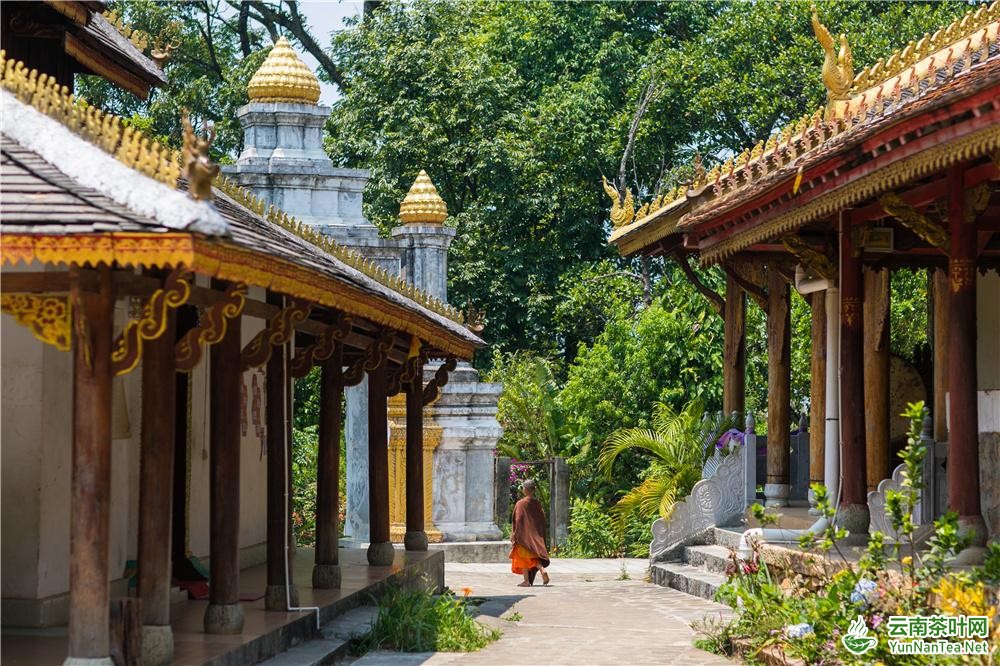
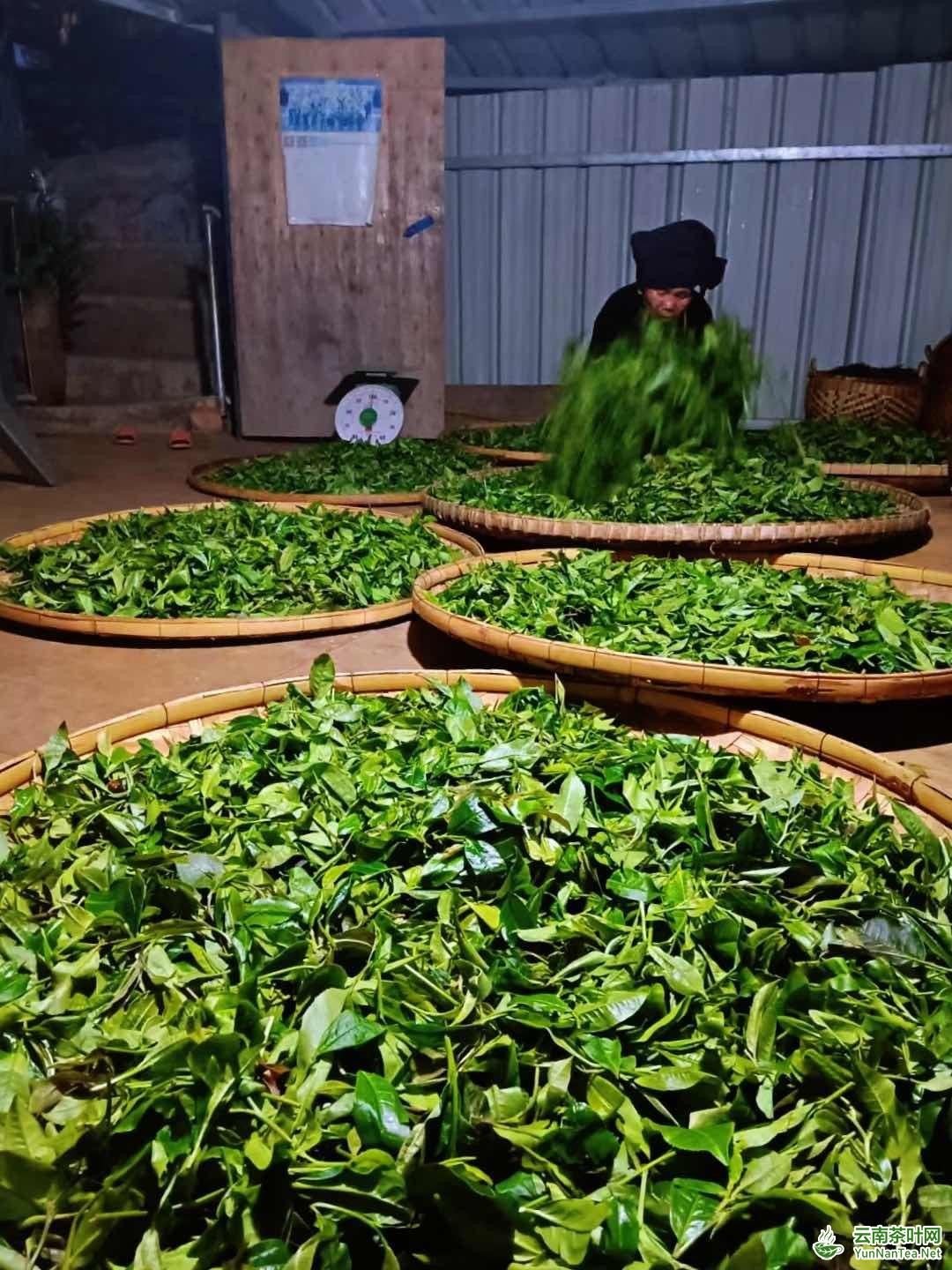
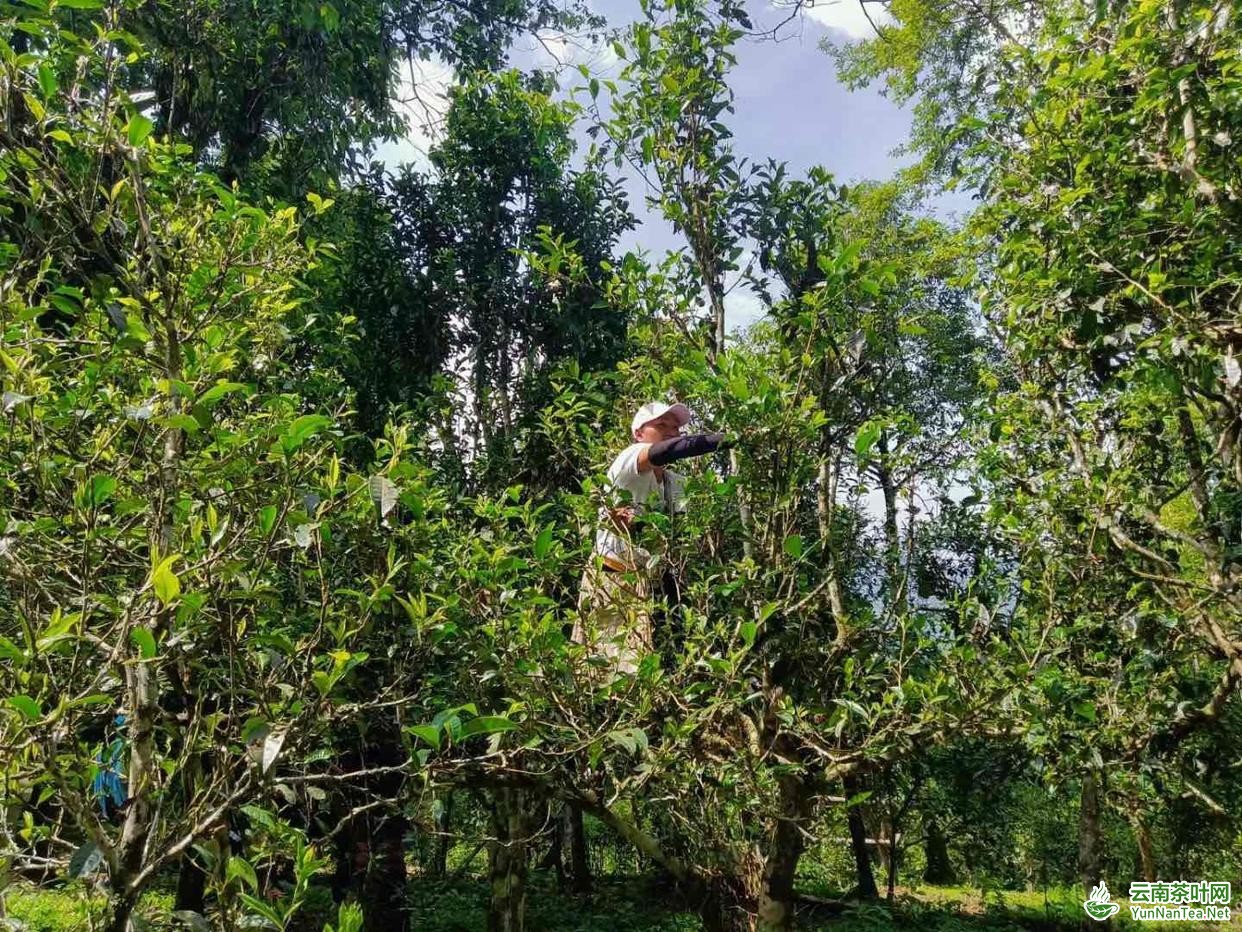
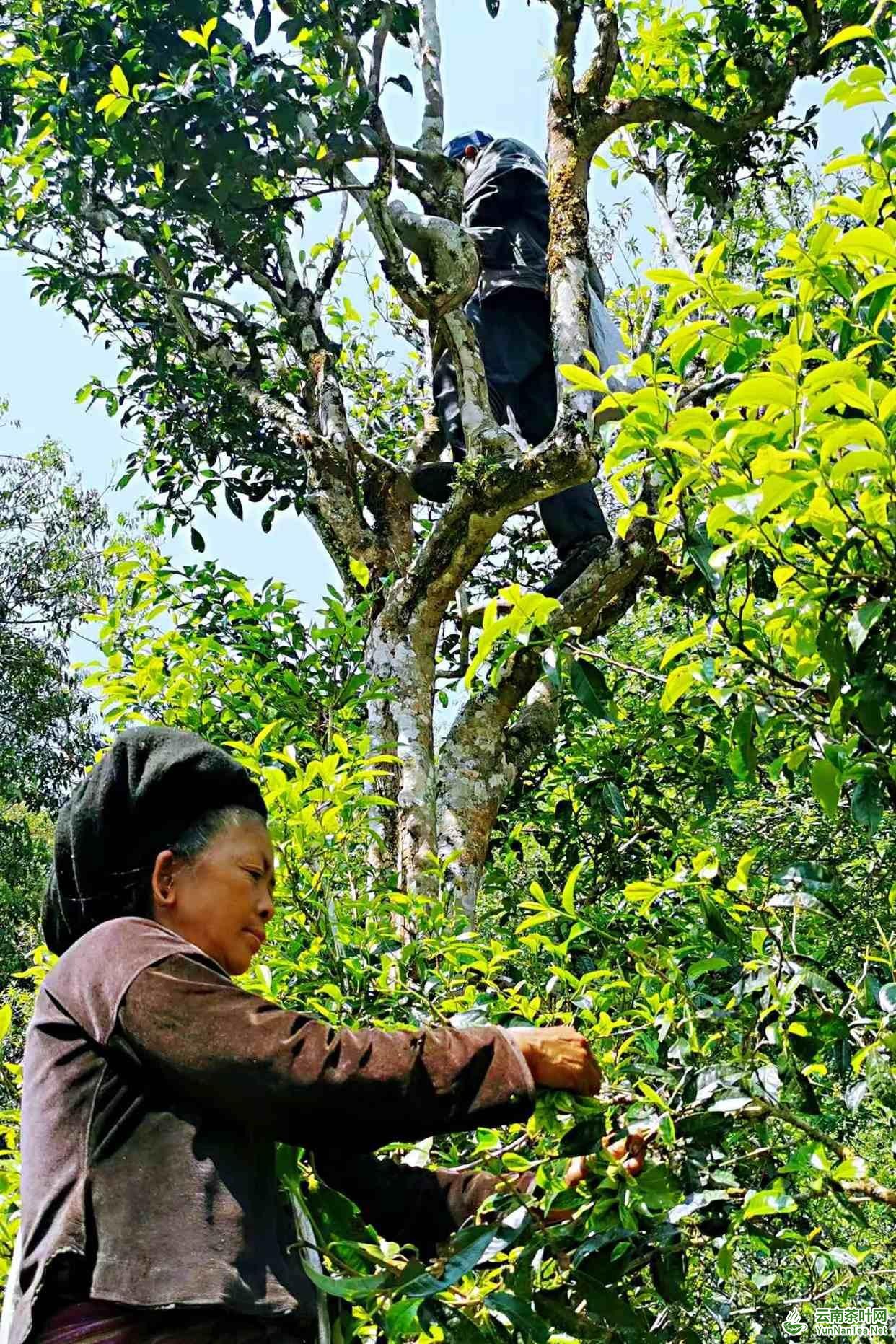
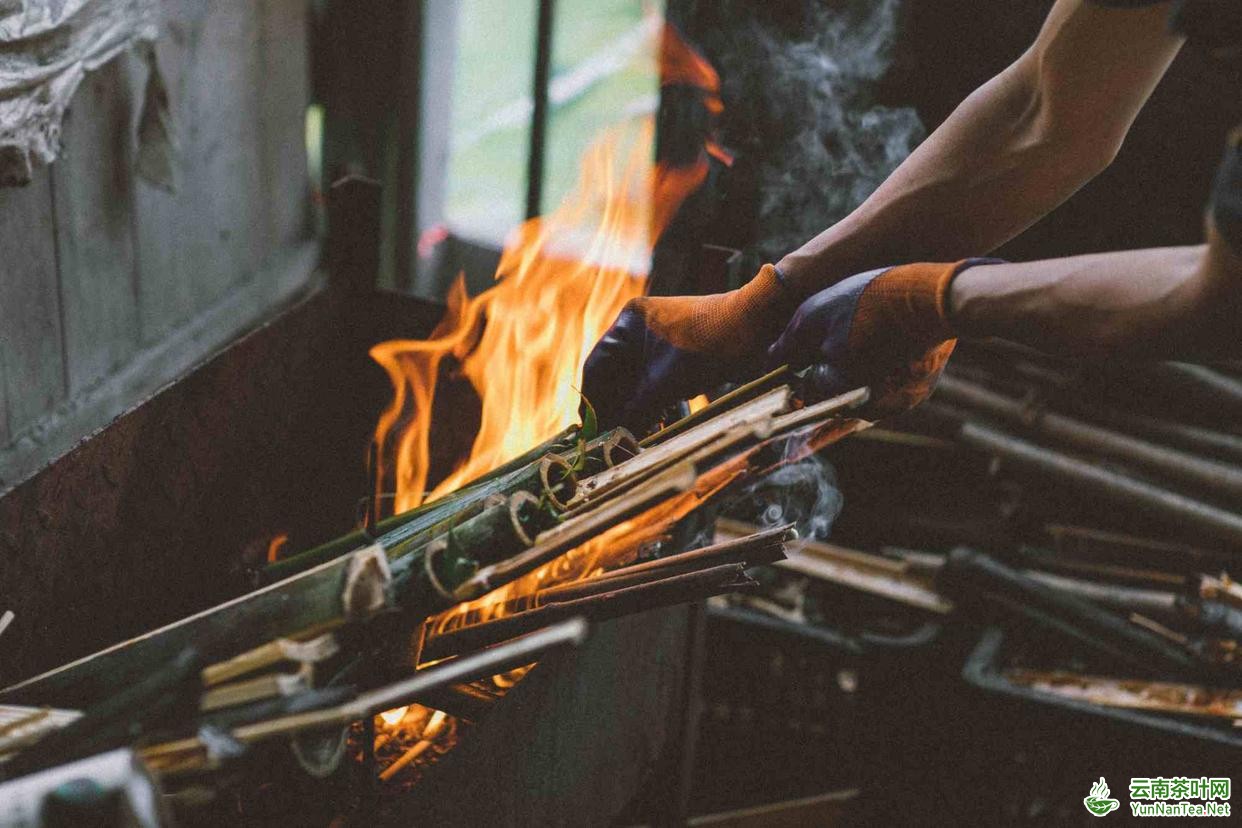
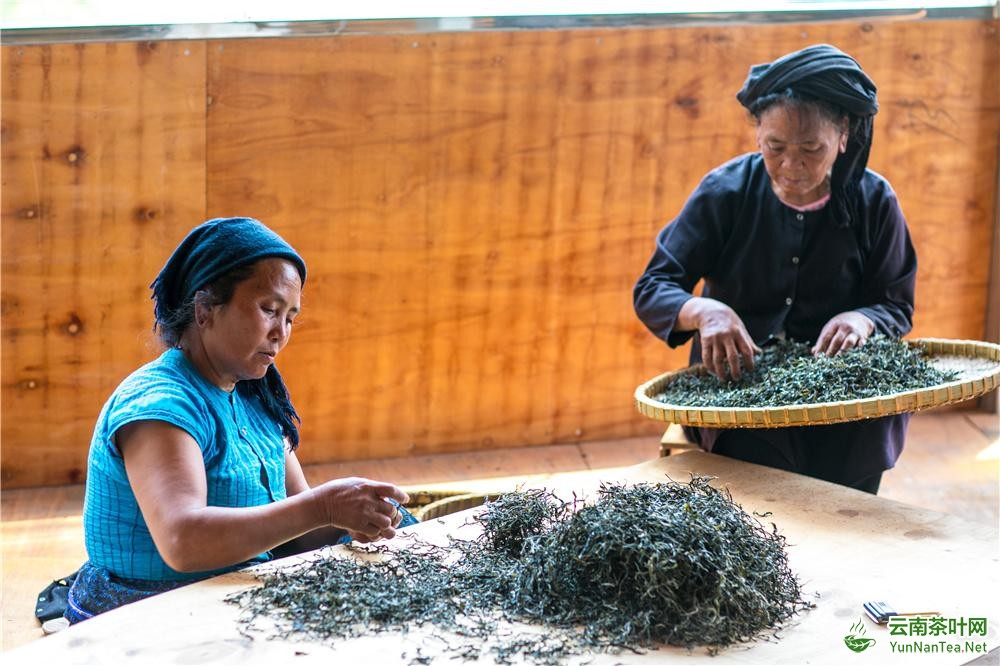
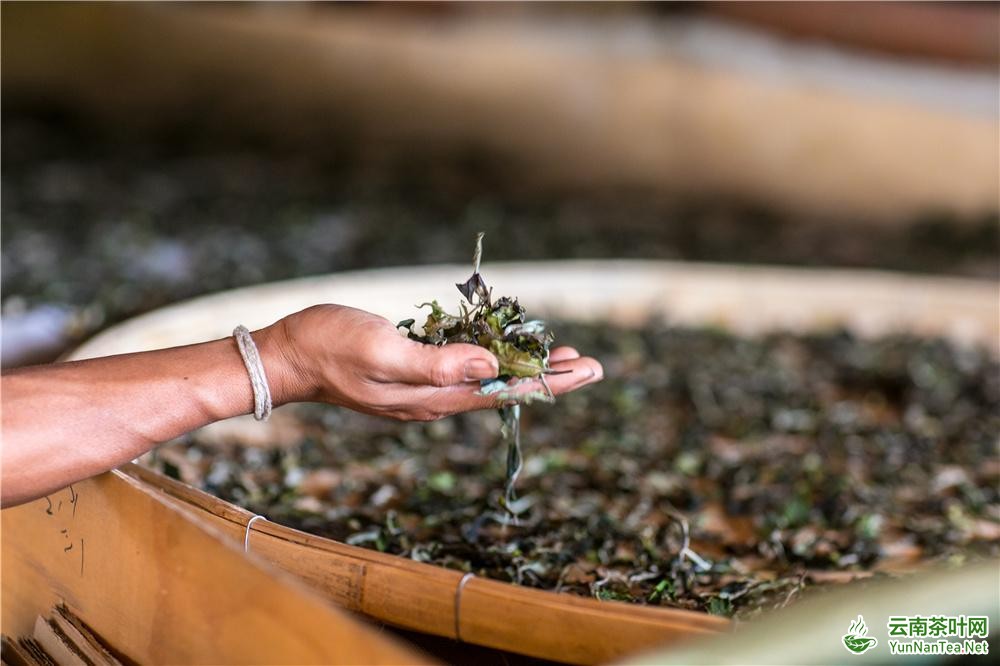
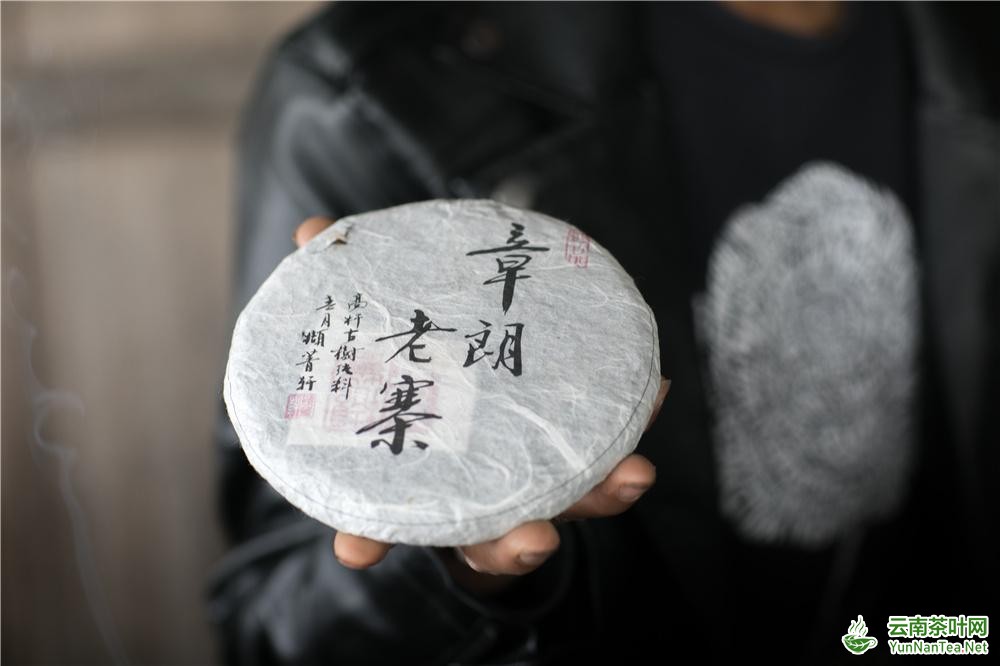
On the high mountains of Badashan District in Yunnan, China, there is a primitive forest called Daheshan Mountain. It has dense forests and scattered valleys, nurturing many ancient tea trees that have been around for hundreds of years. Tea trees coexist with forests, and there are many small tea trees that naturally grow after tea seeds fall to the ground in the forest, carrying on high-quality old trees. The nearby Zhanglang Old Village has a long history and is dotted with ancient tea gardens.
High mountain forests and wild tea trees
According to the records of the Beiye Sutra collected by the Zhanglang Ancient Buddhist Temple in Zhanglang Village, more than 1400 years ago, Buddhist disciple Maha Hong returned from studying scriptures in Sri Lanka with an elephant carrying them. When he arrived at Mount Engongduo (now the location of the Zhanglang Ancient Buddhist Temple), due to the winter season, freezing rain suddenly fell, and the elephant was frozen and unable to kneel down. The nearby villagers rushed over upon hearing the news and helped Maha dry and tidy up firewood, igniting a raging fire to keep the elephant warm and cool. Later, Mahakhang built a temple and tower here, and mobilized people from surrounding villages to move to the current address to form a village, named "Zhanglang" to commemorate the elephant's contribution in carrying scriptures. At that time, they called this place "Jingsang", which means "the place where our ancestors once lived".
Zhanglang Village is inseparable from elephants
The 1400 year old Zhang Lang of Baixiang Temple has "six thousand year treasures": ancient villages, temples, wells, tea trees, tea farmers, and tea customs. There are still relatively complete historical relics of the Blang tea culture preserved here. The village has built a Blang ecological museum, and the living fossil like material and intangible cultural heritage survive in the daily lives of the villagers, inseparable from tea throughout their lives.
As the saying goes, 'Where the Blang people have lived, there are thousand year old tea trees.' Nowadays, it is the main tea producing area in Yunnan.
Tea, in the long river of history, has been blessed by the ancient tea trees of the Brown people, who have accumulated rich tea culture and unique tea art. The Blang people are descendants of the Pu people, who were the first to discover and cultivate tea trees. During the Han and Jin dynasties, the Pu people were distributed on both sides of the Lancang River in present-day Yunnan and to the west. The Blang tribe lives in the deep mountains and is their branch. The ancient tea tree holds significant cultural significance, and the people of Zhanglang regard it as a sacred treasure. They not only offer sacrifices to the ancient tea tree and tea ancestors, but also use tea as a gift in weddings, funerals, and other occasions, bringing people closer together. The Ancestral Song of the Blang Tribe
Bayan Leng is our hero,
Bayan Leng is our ancestor,
He left us a bamboo shed and tea trees
He left us the crutch of survival
In the ancient songs and folk legends that have been passed down for thousands of years, tea was brought back to the village by Bayan Leng to be artificially transplanted and cultivated, and named "La", which is equivalent to "tea" in Chinese.
The superior ecological environment provides raw materials for the tea cultivation and development of the Blang ethnic group. Ancient tea farmers have accumulated rich experience in tea cultivation and tea making. Starting from April every year, the head tea of Zhanglang Village matures. Wearing black and blue tops and colorful skirts, the women of the Blang ethnic group seized the opportunity to pick tea and skillfully climbed ancient tea trees to pick fresh tea leaves. Zhanglang ancient tree tea leaves have oval shaped leaves with raised leaves, arched or inwardly folded leaf bodies, soft leaves, dark green color, gradually pointed leaf tips or tails, and wedge-shaped leaf bases. The fragrance is unique, resembling orchids, honey, and wildflowers, with a strong mountain and wild atmosphere.
Tea farmers pick tea from trees
Tea farmers who pick tea from trees are also skilled tea makers, skilled in using traditional methods to make loose tea. They boil fresh tea leaves in a hot pot, and when the leaves change color and become soft, they place them on a bamboo sieve and knead them into strips by hand. Then, the tea leaves are naturally dried. This loose tea strip is tightly tied, black and shiny, and not easily spoiled. Bamboo tube tea is an ancient method of making tea leaves: stir fry tender tea tips in an iron pot until dry, then stuff them into a fragrant bamboo tube while hot, until filled and compacted, and then seal and tie with bamboo shoots and leaves. Then place the bamboo tube on the fire pit to bake, constantly flipping it over during baking. When the bamboo tube emits a burnt aroma, the fire is ready. After cooling, the bamboo tube is peeled off, and the noble and elegant aroma of bamboo blends with the tea fragrance. A tube of fragrant and strong tea leaves is refreshing.
As a unique way of tea tasting, locals will use bamboo tube tea mixed with honey to entertain distinguished guests. They first cut a section of fresh bamboo that was the size of a bowl, used a bamboo tube as a teapot, sharpened one end, and inserted it into the ground. Inject boiling water and grilled bamboo tea leaves, then divide them into bamboo cups filled with honey for guests to enjoy tea. At this moment, the sweetness of honey, the clarity of spring water, and the richness of tea blend together, creating a unique and unforgettable taste.
Bamboo tube tea sour tea is a highly distinctive dish of the Brown ethnic group. In the hot and humid months of May and June every year, in order to avoid internal stagnation, they boil fresh tea and ferment it in a cool place. After the tea turns sour, put it into a bamboo tube and bury it in the soil. Four months of time have passed to create a tube of sour tea with medicinal value. Local people of all ages have the habit of chewing sour tea, which is said to be able to produce fluids, quench thirst, and aid digestion. In addition to the beneficial sour tea for health, roasted rice tea is another example of using tea as medicine. This tea has unique ingredients, and its brewing method is to first heat the earthen jar in a fire pit, and then add glutinous rice and tea leaves to bake together. Then add several herbs such as Tongguan San, Tianbai Gai, ginger slices, loquat leaves, etc., soak them in boiling water, and finally season with brown sugar. Put them back in the fire pit and cook for a few minutes. A can of dark red medicinal tea that can treat colds and coughs has been made.
Yan Kanlong, a villager from Zhanglang Laozhai, opened a tea shop and combined fresh leaves from ancient tea trees with modern techniques to make refined raw Pu'er tea. The lush ancient tea trees are the best raw material for Yunnan large leaf Pu'er tea. Every spring tea season, his whole family works together to process tea leaves. The tender leaves of large leaf tea can be finely processed through withering, kneading, drying, and post ripening to produce fragrant Pu'er tea. The soup has a bright golden yellow color and a delicate and full texture. The entrance is slightly bitter, but it returns sweet and smooth. Rich tea aroma and strong tea aroma.
Tea farmers pick green tea leaves
Zhanglang Tea
Zhanglang Tea often says, "The ancient tea trees of Zhanglang grow naturally on high mountains. If you want to find them, you have to walk several difficult mountain roads, and the process of climbing the trees is also full of danger. When I was a child, I often confronted snakes on the trees. Although harvesting is difficult, the quality of wild tea trees is definitely better than that of artificial cultivation, so no matter how hard it is, we must obtain them. The ancient tea trees are friends of the village. We not only need to cherish them, but also let more and more people know that Zhanglang's tea has been precious since ancient times." Many tea farmers in Zhanglang Village, like Yankanlong, silently guard the land and traditions left by their ancestors with cups of sweet tea. (This article is from Pengpai News. For more original information, please download the "Pengpai News" app)
